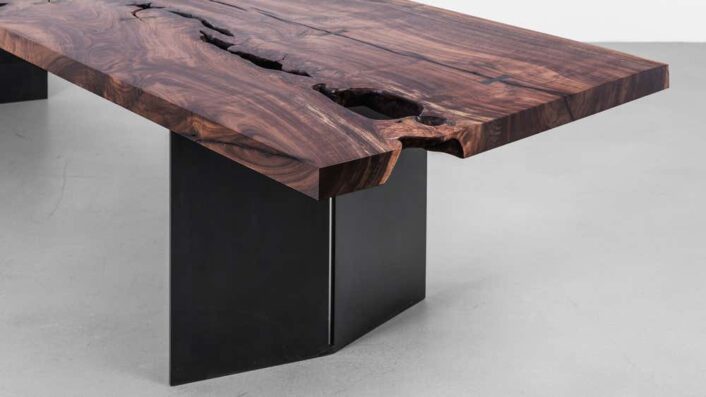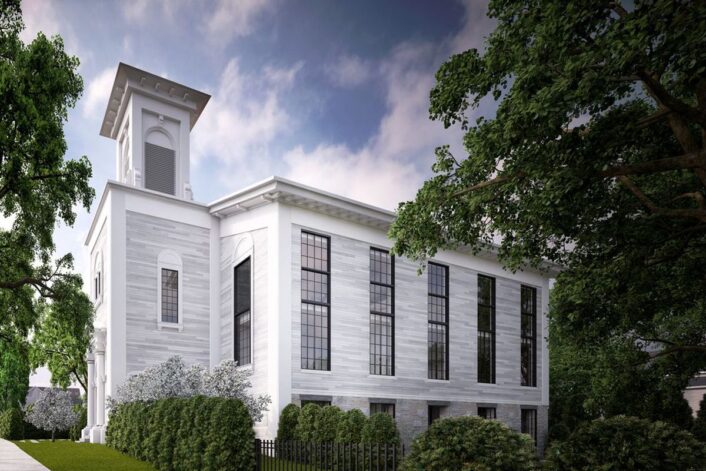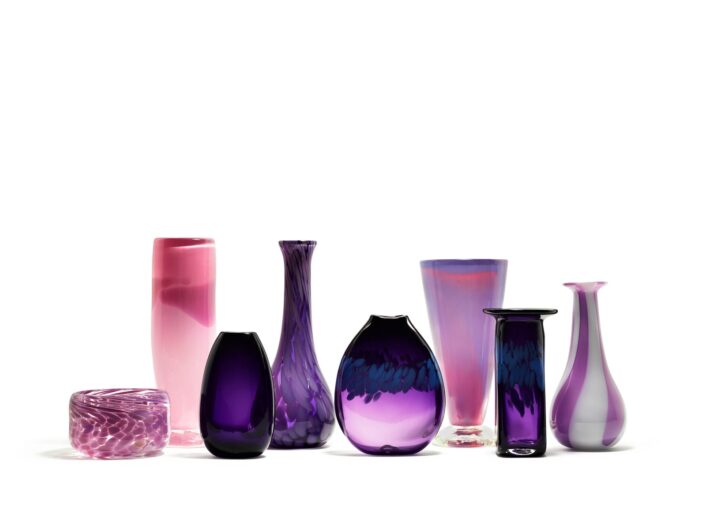Design
Maximilan Eicke
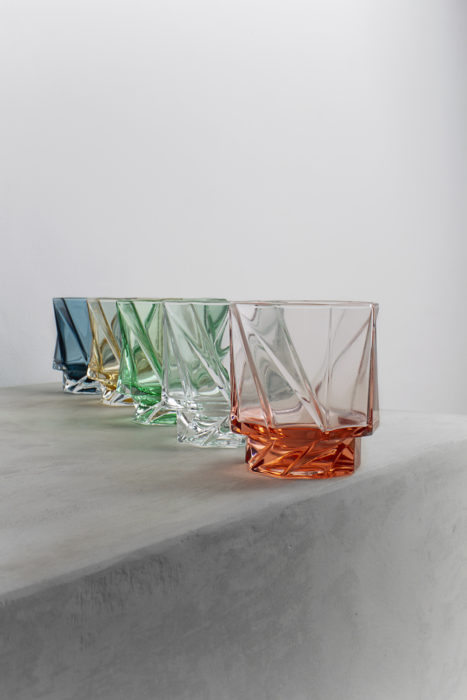
Ghost Highball glasses in five different colors.
Image courtesy of: Whitewall Design
Since 2009, Maximilian Eicke has been creating design pieces for his label, Max ID NY. The Dusseldorf-born designer launched his iconic, contemporary-leaning brand at just twenty years old. Interestingly, Eicke grew up with art dealer parents; always convinced that his future would involve antiques. He says (courtesy of Hospitality Design), “As I got older, I found that my tastes skipped a few centuries ahead. While admiring the past, I felt I also needed to understand and be a part of where the future of the design world would go.”
The designer spent his early formative years in Germany; the family started spending summers in the Hamptons when Eicke was only three years old. His parent’s art gallery on Main Street in Sag Harbor was the reason behind those treasured summer vacations. In 1999, the family permanently moved to Sag Harbor so that the children could attend middle and high school in the United States.
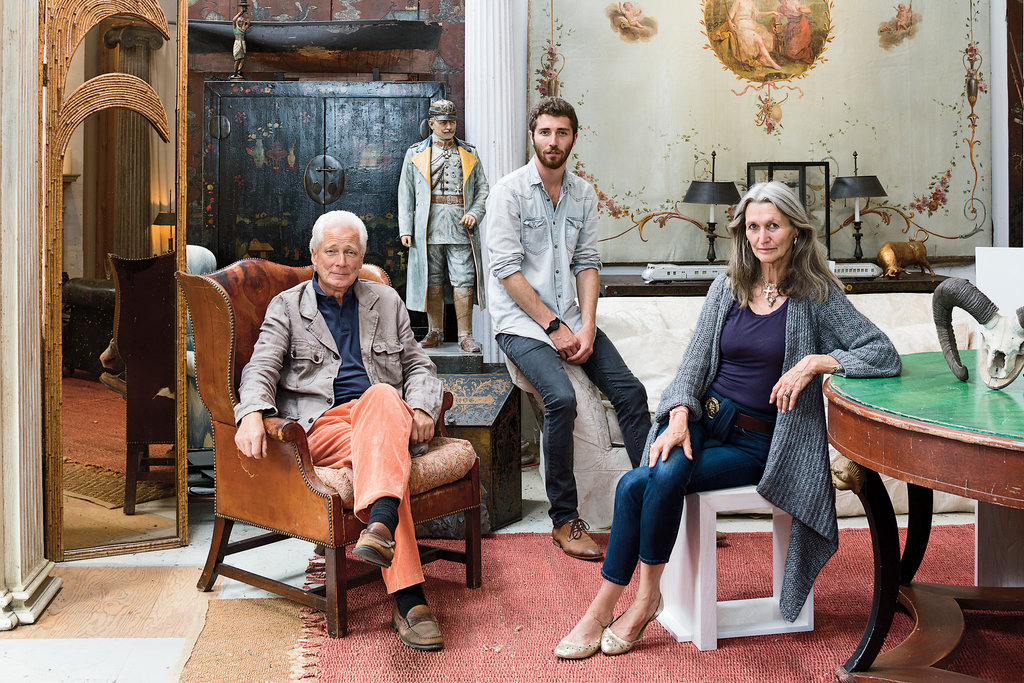
Maximilan and his parents at their store in Sag Harbor. Michael, sitting in a 19th-century leather wing chair, and Elfi, in front of a chair designed by Eicke called P.S.1, in front of a terra-cotta sculpture of Kaiser Wilhelem II.
Image courtesy of: The New York Times Style Magazine, photographed by: Andrew Rowat
Hoping to be a part of the family’s business but desiring to have his own niche, Eicke says he used an analytical approach when creating his own style. He knew that he wanted to create minimalist furniture and the inspiration was the design style of Brahmas and the Dutch art movement, De Stijl. Up until that time, Eicke felt as though art was more of a burden than a love. Exposure to those different art movements showed the young artist that art “can bring pleasure and passion to my life.”
Under Max ID NY, Eicke quickly developed his own style… one that is best described as minimalist-meet-timeless. The initial collection paid homage to the concept of New York City apartment living. Taking into account smaller spaces, the collection revolved around side tables, hall chairs, and dining chairs. These “accessory furnishings” could work for two types of clients: those that are presently redecorating and those that want to add to their space.
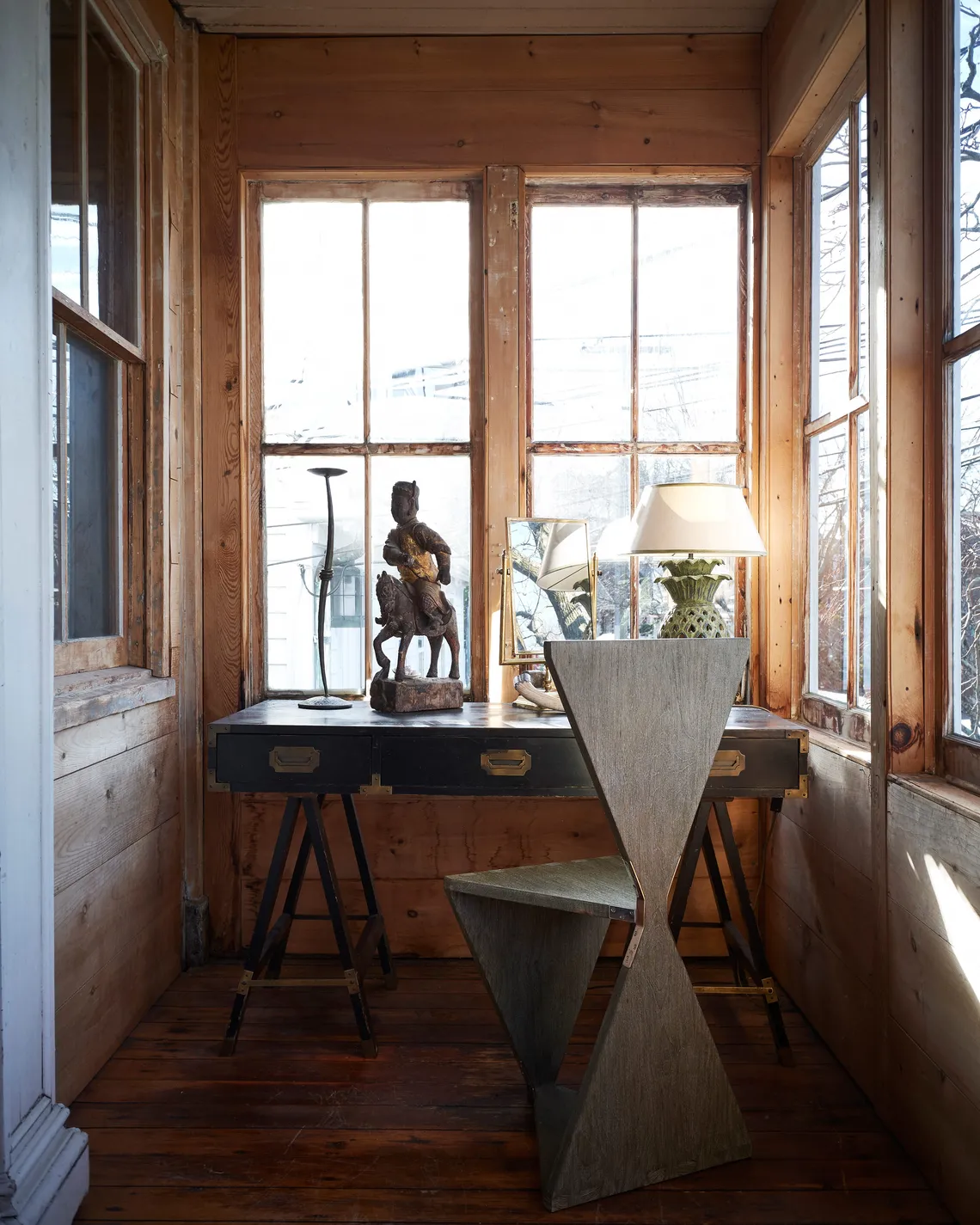
Eicke’s parents purchased this cottage in 1996; in 2020, Eicke moved back to Sag Harbor full time… and back into his childhood home. After a one month renovation, Eicke and his girlfriend moved in. About the porch pictured above, he says (courtesy of Curbed), “It was always my mom’s favorite place.” The campaign desk has been in the family for years and the geometric chair was designed by Eicke. He continues, “I was always inspired by the Zig Zag chair by Gerrit Rietveld. So it is my way of paying homage to when I started my company.”
Image courtesy of: Curbed, photographed by: Bjorn Wallander
Eicke spreads his time between Sag Harbor and Bali. His first visit to Bali in 2010 resulted in a desire to spend time in Indonesia and by the end of his first year there, he had produced his first furniture collection. In the beginning, Eicke spent three months in Indonesia and nine months in the Hamptons. For a while, that equation flipped and Eicke came to Sag Harbor for summers, spending the majority of his time in Bali. In 2020 however, the elder Eicke’s moved to Bali full-time and Eicke moved back to the Bay Street, his childhood home in Sag Harbor.
Eicke built his dream home in Bali… a “compound” that is essentially a group of striations centered around a courtyard and pool. The main house consists of two wings, one for himself and one for his parents. The experience of building allowed the designer to combine both Eastern and Western influences… something that he does masterfully. One element that was vital is that the studio has space; he told Surface Magazine, “Space is paramount. I need more than one project to work on at a time. I get distracted too easily and bored of the same things, so I constantly need to be able to jump around.”
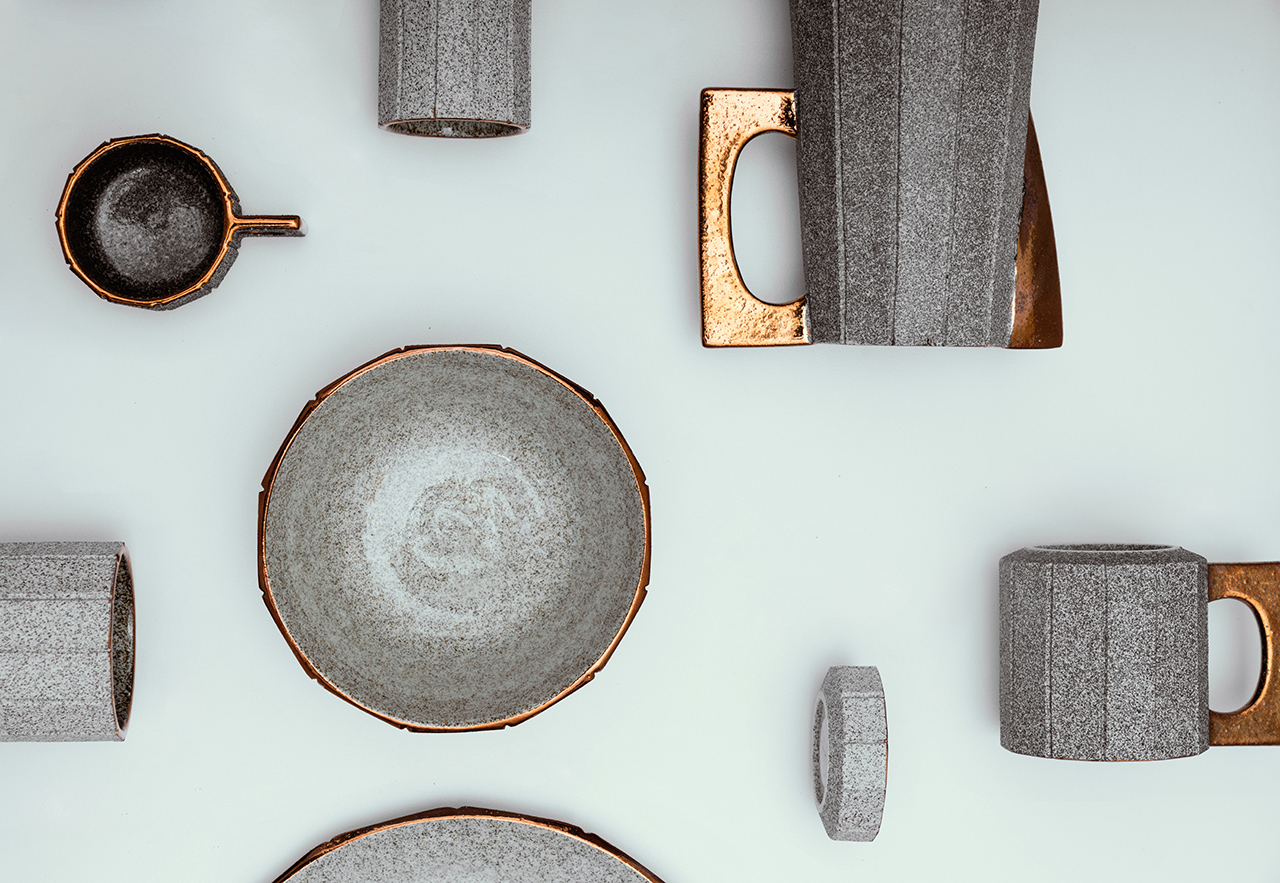
From Eicke’s 2019 ceramics collection, The Yahochu; it was produced in conjunction with Gaya Ceramics.
Image courtesy of: Design Milk
Similar to other designers today, Eicke loves collaborations; the latest one was with The Sexton, a high-end single malt whiskey brand. Partnering with The Sexton, Eicke created a custom color for his Ghost Tumblers that matches the brand’s style and hue. This served as his first collaboration with tabletop accessories.
In 2019, Eicke produced The Yahochu ceramics collection with Gaya Ceramics, a Balinese company we love! In development for over three years, the collection name means, “I want” in Russian slang. It consists of 28 designs that are hand-produced for Max ID NY. Each piece is hand-thrown on a wheel before any additional stages occur. Dinnerware and serve-ware use the same porcelain, even though they possess two tones of grey. The pieces are then accentuated with a clear glaze and a copper luster to highlight the details.
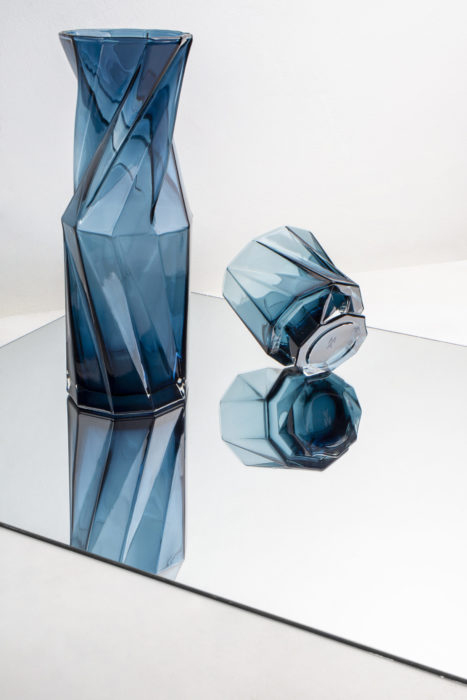
The Balinese compound’s geometry translates to Eicke’s collection; specifically the Ghost barware. The facets in the glassware mimic the main house’s steel-beam roof structure. In addition, the colors are inspired by the natural stones and textures found throughout.
Image courtesy of: Whitewall Design
This spring, Eicke will debut a new collection that centers around accessible outdoor furniture. Growing up in the seaside community of Sag Harbor and spending years in Bali made the young designer appreciate the need for high quality, stylish outdoor furniture that does not scream “outdoor furniture.” Describing the collection, Eicke told Alia Akkam for Hospitality Design, “it was specifically designed to be, look, and feel like outdoor furniture,” he says, and he wanted to transform that notion by making “aesthetic furniture that functions outdoors, but can also be used indoors without anyone being the wiser.”
In addition, Eicke is in the process of finalizing the Soft Collection, a new upholstered furniture collection that was dreamt up in Bali. The constraints of comfort in addition to the geometry of building’s architecture, the furniture pieces, as well as all his recent debuts, are directly inspired by Eicke’s Balinese compound.
